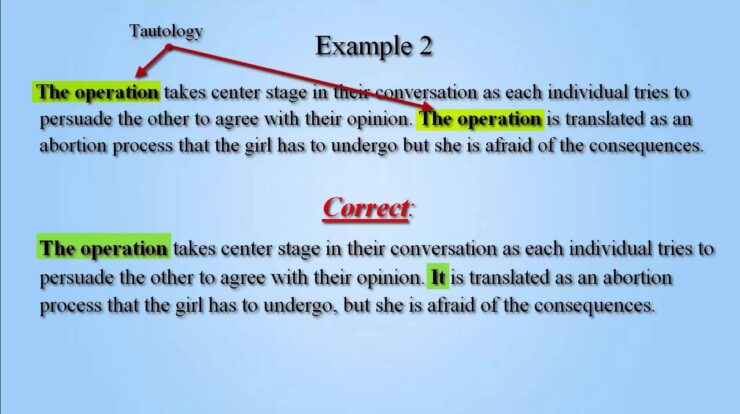
Tautological definitions, a straightforward and clear method of defining terms, provide an unambiguous understanding of concepts by restating them in equivalent or synonymous terms. These definitions, often used in formal contexts, serve a specific purpose and offer both benefits and limitations.
Tautological definitions come in various types, each with distinct characteristics. Some common types include circular definitions, which restate the term being defined within the definition itself, and analytic definitions, which break down a term into its constituent parts.
Tautological Definition
A tautological definition is a type of definition that restates the term being defined using different words or phrases that essentially mean the same thing. In other words, it defines a term by repeating itself in a different form.
Characteristics of Tautological Definitions
- They are circular in nature, meaning they use the term being defined within the definition itself.
- They do not provide any new information or understanding of the term.
- They can be useful for clarifying the meaning of a term within a specific context.
Types of Tautological Definitions

Simple Tautology
This type of tautology simply restates the term being defined using synonyms or near-synonyms.
- Example: “A circle is a round shape.”
Complex Tautology
This type of tautology uses a more complex phrase or sentence to restate the term being defined.
- Example: “A computer is an electronic device that can be programmed to carry out a set of instructions.”
Purpose and Usage of Tautological Definitions

Purpose
Tautological definitions serve the purpose of clarifying the meaning of a term within a specific context or for a specific audience.
Usage
Tautological definitions are often used in technical writing, legal documents, and educational materials to ensure that the meaning of a term is clearly understood by the reader.
Benefits and Limitations
- Benefits:Clarity, simplicity, ease of understanding.
- Limitations:Circularity, lack of new information, potential for confusion.
Examples and Applications
Examples
- “A car is a motor vehicle that is used for transportation.”
- “A book is a collection of written or printed pages bound together and covered in a protective cover.”
- “A computer is an electronic device that can be programmed to carry out a set of instructions.”
Applications
- Technical manuals
- Legal documents
- Educational materials
- Glossaries and dictionaries
Alternatives to Tautological Definitions
Contextual Definitions
These definitions provide the meaning of a term within a specific context or situation.
Operational Definitions, Tautological definition
These definitions specify the operations or procedures that are used to measure or define a term.
Advantages and Disadvantages
- Advantages:More informative, provide new information, avoid circularity.
- Disadvantages:May be more complex, may not be suitable for all situations.
Ending Remarks
In conclusion, tautological definitions offer a precise and direct approach to defining terms. Their simplicity and clarity make them valuable in specific contexts, such as technical writing or legal documents. However, it’s important to consider their limitations and explore alternative methods when a more nuanced or comprehensive definition is required.
Essential FAQs
What is the purpose of a tautological definition?
Tautological definitions aim to provide a clear and unambiguous understanding of a term by restating it in equivalent or synonymous terms.
What are the different types of tautological definitions?
Common types include circular definitions, which restate the term within the definition, and analytic definitions, which break down a term into its parts.
When are tautological definitions most useful?
Tautological definitions are valuable in contexts where precision and clarity are paramount, such as technical writing or legal documents.





